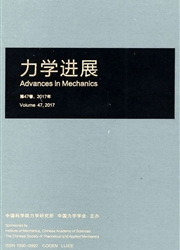

 中文摘要:
中文摘要:
混凝土仿生自修复是根据生物体损伤修复的原理,在混凝土传统组份中复合特殊组份使其具有自修复功能,当混凝土材料出现损伤或裂缝时,自动触发修复反应使其愈合,恢复甚至提高开裂部分的强度,从而提高整个结构的性能.混凝土自修复系统将免去有效的监听和外部修补所需的高额费用,节省建筑结构运行费用,且大大有利于建筑结构的安全性和耐久性.本文在简要介绍生物体损伤修复原理的基础上,总结了两种混凝土自修复技术与方法;综述了国内外有关裂缝自修复混凝土的研究现状;分析了仿生自修复方法中所存在的问题及其实用价值,展望了其发展趋势和应用前景;最后,指出需进一步研究的方向.
 英文摘要:
英文摘要:
Bionical self-repairing concrete is made by embedding special elements into the concrete. Its selfrepairing performance is similar to biomaterials. The repairing response in the concrete material is triggered to heal cracks and damage, recover and improve the strength of the damaged area, where and when the matrix cracks. The self-repairing in concrete can retrench the high cost of effective monitoring, maintenance and structure running, and greatly improve safety and durability of concrete structures. In the paper, firstly, with a brief introduction to the self-repairing properties of biomaterials, two types of crack self-repairing are summarized. Secondly, the state of the arts at home and abroad of crack self-repairing in concrete materials is given. Thirdly, the problems existing in the technologies of self-repairing and their practicability are analyzed; the prospects of applications are discussed. Finally, some future research directions are suggested.
 同期刊论文项目
同期刊论文项目
 同项目期刊论文
同项目期刊论文
 期刊信息
期刊信息
